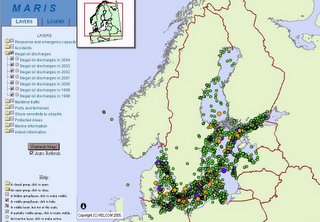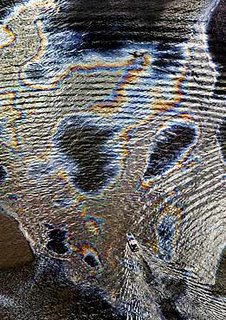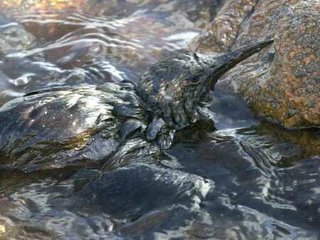Suomeen ensimmäinen siirrettävä öljyyntyneiden lintujen pesu- ja hoitoyksikkö
Öljysuojarahasto on myöntänyt rahoituksen öljyyntyneiden lintujen puhdistamiseen tarkoitetulle pesu- ja hoitoyksikölle. Hanketta varten myönnettiin 125 000 euroa. Lisäksi 7500 euroa myönnettiin eläinlääkinnälliseen erikoisvälineistöön. Kahdesta kontista koostuva lintupesula voidaan nopeasti siirtää maanteitse tai meritse öljyonnettomuuspaikan läheisyyteen antamaan ensiapua linnuille. Yksikössä pystytään käsittelemään noin 200 öljyyntynyttä lintua vuorokaudessa.
Yksikkö sijoitetaan Itä-Uudenmaan pelastuslaitoksen yhteyteen Porvoon palolaitokselle, joka huolehtii siitä, että yksikkö on käyttövalmis ja että se pystyy lähtemään kohti onnettomuuspaikkaa viivytyksettä. Pelastuslaitoksen henkilöstöä koulutetaan käyttövalmiuden takaamiseksi. Pesu- ja hoitoyksikössä tarvittavia vapaaehtoisia koulutetaan yhdessä WWF:n kanssa. Tarvittaessa yksikkö on siirrettävissä myös muiden alueellisten pelastuslaitosten käyttöön.
Konteista toinen varustellaan muun muassa eläinlääkinnällisiä toimenpiteitä sekä lintujen pesua ja jälkihoitoa varten. Onnettomuuspaikalla kontit sijoitetaan vieretysten, ja kevytrakenteiset pitkät sivut poistetaan, jolloin sisätila avautuu yhtenäiseksi tilaksi.
Pesuun ja hoitoon ohjaamisen perusteita ovat pääasiassa lajin uhanalaisuus ja kunto. Osa linnuista jouduttaneen kuitenkin lopettamaan jo onnettomuuspaikalla. Hoitoyksikössä linnun kunnon tarkistaa eläinlääkäri, minkä jälkeen hoito aloitetaan. Keinoruokinta jatkuu hoidon ajan. Lintu pidetään koko ajan lämpimänä, koska öljy liuottaa vesilinnun ihoa peittävää rasvakerrosta. Pesun jälkeen linnut siirretään konteista ulkoaltaisiin. Yhden linnun koko hoitojakso saattaa kestää 10-15 vuorokautta.
Viime vuosina tuhoisia öljyonnettomuuksia on sattunut Ranskassa, Espanjassa, Australiassa, Etelä-Afrikassa ja tänä keväänä Virossa. Näissä tapauksissa pelastajien käytössä ei ole ollut ensiapuyksikköä, ja pesulat ja hoitolat on jouduttu perustamaan esimerkiksi kouluihin ja urheiluhalleihin. Ensimmäisten onnettomuutta seuraavien tuntien pelastustoimet vaikuttavat ratkaisevasti siihen, miten linnut jäävät henkiin. Tämän vuoksi nopeasti paikasta toiseen siirrettävä hoitoyksikkö on erityisen tärkeä. Yksikköä voidaan käyttää lintujen ensiapuun myös Suomen lähialueilla.
Suomen ympäristökeskus (SYKE) vastaa Suomessa suurimpien alusöljyvahinkojen torjunnasta ja organisoi öljyyntyneiden lintujen pesu- ja hoitoprosessin sekä pesu- ja hoitoyksikön käytön näissä onnettomuustilanteissa. Alueellinen pelastuslaitos vastaa öljyntorjunnasta omalla alueellaan. Sykessä on ympärivuorokautinen ympäristövahinko- ja erityistilannepäivystys. Öljyonnettomuuden tapahduttua Syken päivystäjä hälyttää tarvittaessa apuun lintuasiantuntijan, joka keskitetyn öljyntorjuntajohdon alaisuudessa sovittaa yhteen lintujen pelastustoimia.
Lintupesulan rahoituksesta vastannut öljysuojarahasto on ympäristöministeriön hoidossa oleva valtion talousarvion ulkopuolinen rahasto. Varat öljysuojarahastoon kerätään perimällä öljysuojamaksua maahantuodusta ja Suomen kautta kuljetetusta raakaöljystä ja öljytuotteista.
The first "Animal CLeaning Hospital" unit has been approved and ordered by the Finnish environmental authorities. Maybe this is the start of a better prepardness for the coming oil disasters, lets hope so.
Maybe someone does do something?

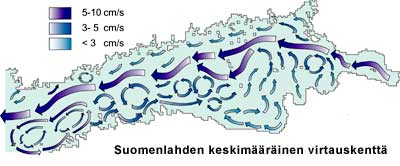
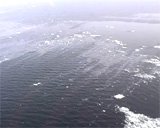


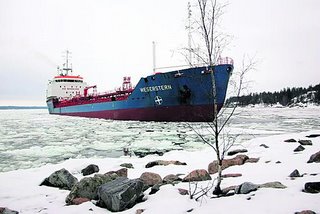
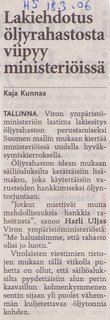

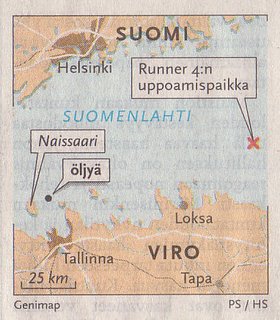


 BORGÅ.
BORGÅ.


